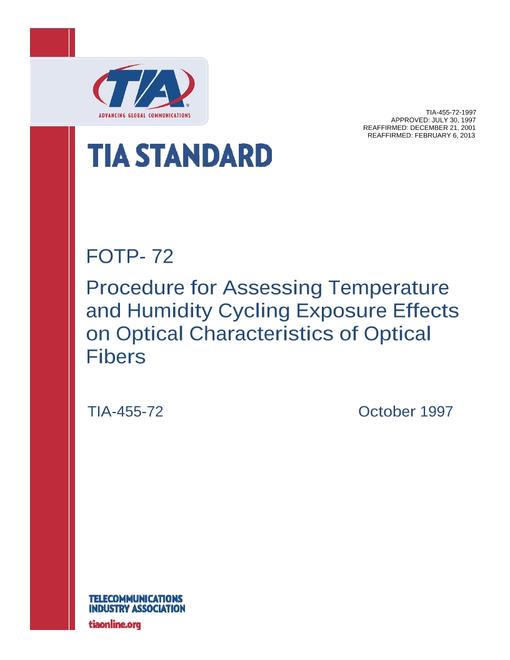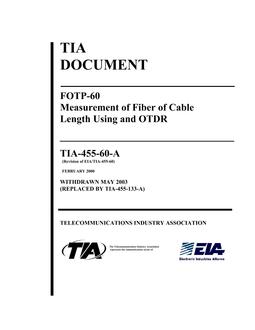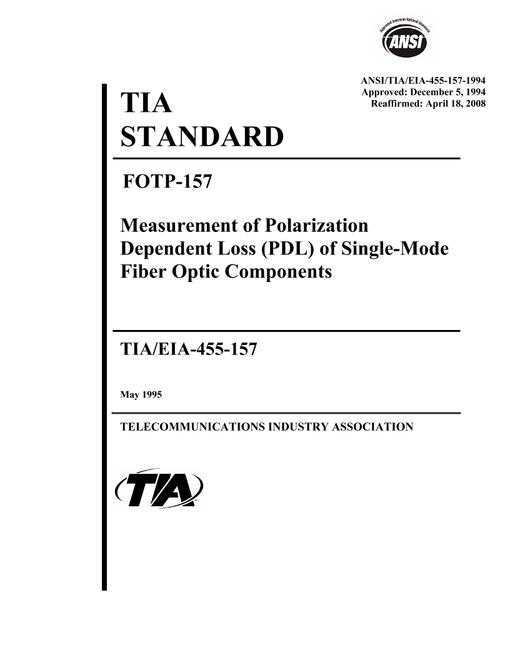-
-
Available Formats
- Availability
- Priced From ( in USD )
-
Available Formats
-
- Secure PDF 🔒
- Immediate download
-
$93.00Members pay $69.75
- Add to Cart
-
- Printed Edition
- Ships in 1-2 business days
-
$93.00Members pay $69.75
- Add to Cart
Customers Who Bought This Also Bought
-

TIA TIA-455-72
Priced From $84.00 -

TIA TIA-455-84-B
Priced From $71.00 -

TIA TIA-455-60-A
Priced From $100.00 -

TIA ANSI/TIA-5730000-A
Priced From $101.00
About This Item
Full Description
This procedure can be applied to any single-mode passive component, including connectors, splices, couplers, attenuators, isolators and switches. It is used to measure the total range of insertion loss, a, due to changes in polarization of the launch state. This procedure can also be used to measure the polarization dependence of isolated ports. For branching devices, it can also be used to measure the total range of coupling ratio, cr (i). It cannot be used to measure polarization maintaining components or to measure the polarization dependence of return loss.
Two methods for measuring the polarization dependence are described. Method A will determine the maximum polarization sensitivity over all possible polarization states including linear, circular and elliptical. Method B will determine the maximum polarization sensitivity over all linearly polarized launch states. Method A is preferred, particularly for any device in which the polarization state of light passing through the device is recommended to ensure that it is adequate for a particular component. Method B will generally understate the polarization sensitivity of devices which are not dependent on linearly polarized light. Therefore, it is not recommended for tests where the device under test (DUT) has not been characterized to be sensitive to purely linear polarized light.





